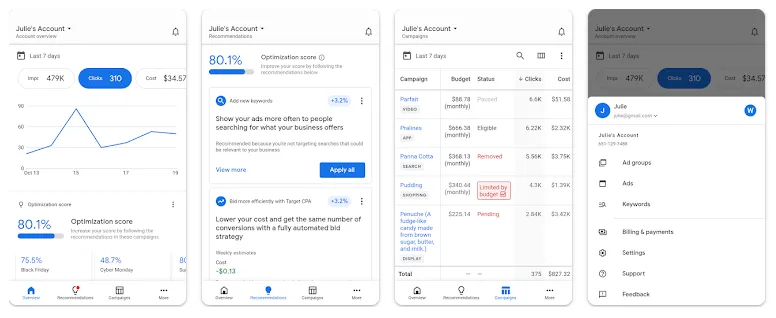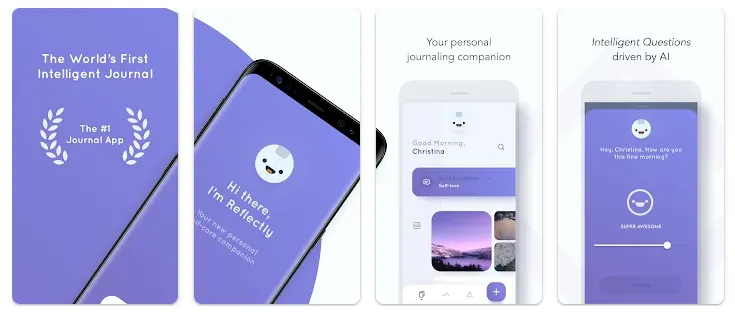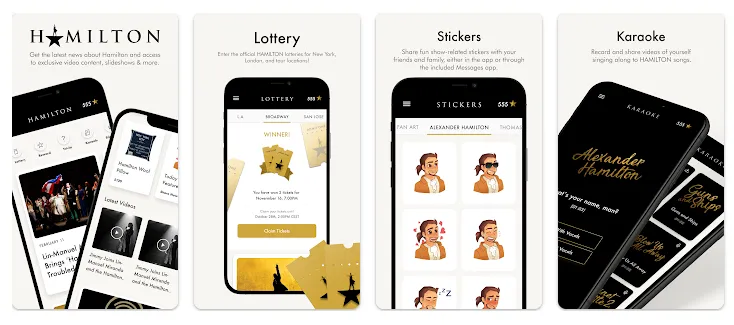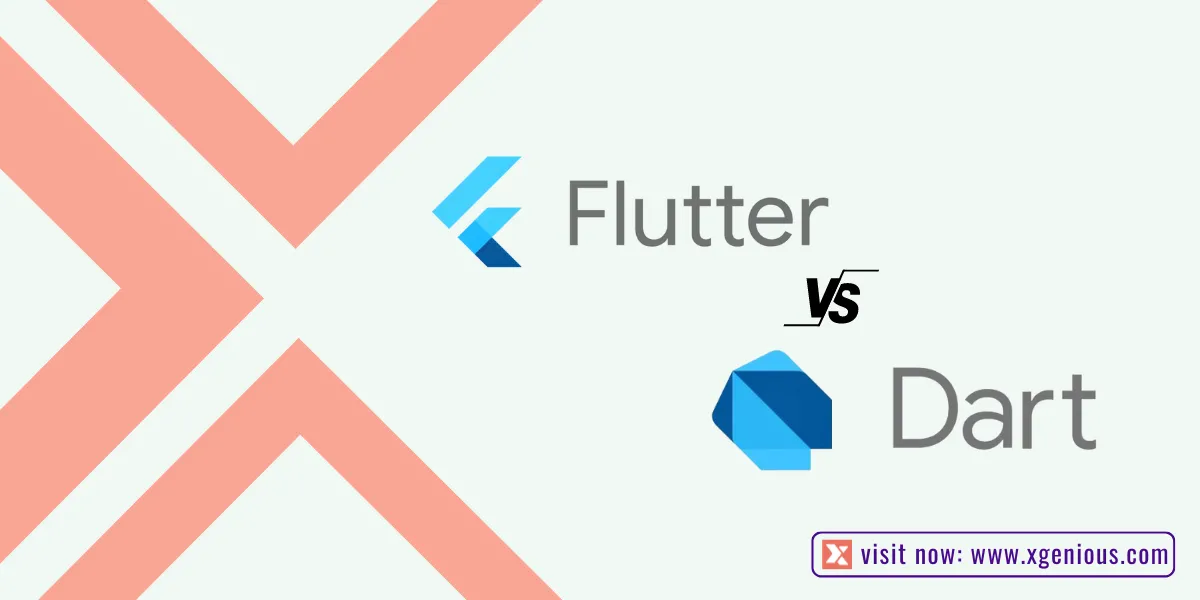From booking your holiday destination to buying your clothes, all are now happening with just a finger tap. There are a gulf of apps that are ready to assist the public.
Building a mobile app for any business was not an easy cup of coffee. But with the expedient web development processes, mobile apps are the need for any business.
Though the app development procedure is daunting, the feedback and revenue from it are best for any business. It is important to learn for which operating system, audience, and purpose your business is developing the app.
So, are you ready to develop the next mobile app for your intended business? They have an intense read about Flutter vs Dart; two of the most popular languages for any mobile app development. So, which one to choose and when!
Flutter Overview
Flutter is a relatively new language that started functioning in 2017 and since then it became famous in cross-platform development. It is created and supported by Google.
However, the Flutter framework is inherited from the Dart language. The best part of this language is the developer can use a single code for different app development.
Mobile app development has become much easier with Flutter. Large-scale businesses love to work with the Flutter framework.
A survey in Statistics showed that around 12.64% of professional developers are choosing Flutter due to its high functionality. Moreover, Flutter supports the native code in the library as well.
Native applications for ios, Android, and Linux can be made with this language without any complication. It is an open-source programming language you can start with.
There are many ready-made templates that the developers can start working with. The developers can also make the templates on their own. It’s on the top priority list of the developers for its open access.
Easy API integration is available in Flutter. It increases the native app efficiency and then native features can also be integrated with Flutter.
The developer can work with multiple interfaces and it has a structured Graphical Processing Unit (GPU).
Flutter compiles the Software Development Kit (SKD) to hit many platforms simultaneously. And the app maintenance is easy.
Related Article: Flutter Vs Kotlin
Advantages of Flutter
- Hot Reloading: It is one of the best benefits of Flutter. Here, the developer can edit and have results in real-time. Waiting for the app to relaunch or rebuild is not an option in Flutter. Quick edit and results for developers.
- Easy learning: It is powered by Dart. So, there are many resources available. Any new developer can grab this opportunity and learn the language as fast as possible. The range of materials, and tutorials all are out there with large community support.
- Vast Widget options: Flutter can provide tons of widgets for your app development. There are text spacing, color, and menus in the widget option. The developer can use them from the library or even use/add their widgets.
- Scalable Apps: Flutter has Google’s Firebase app assistance. This back-end support helps the developers to see the features without compromising app performance. It results in producing scalable apps. Firebase can synchronize all client data quickly and then update them in real-time.
Disadvantages of Flutter
- Finite third-party libraries: The popularity of Flutter is growing and it is praised for its high performance. But the libraries for this framework are still limited.
- Weighty Apps: The apps built with Flutter are large and may take a bit of high storage from the user’s device. Because Flutter apps include the widgets and related framework engine along with the app.
- Restrictive Tools: Flutter has some basic and restrictive tools in comparison to other languages. So, developers might feel the tools and libraries of other native languages are more efficient than Flutter. Some developers worry about the ios development with Flutter. But the Flutter 2 version now has new improvements.
Popular Apps Developed With Flutter
Google Ads

The Google Ads mobile app allows users to view campaign stats, update bids and budgets, receive real-time alerts and notifications, and more.
Built with Flutter, this app provides a smooth and responsive experience for marketers and business owners to manage their advertising campaigns on the go.
Leveraging Flutter’s strong suit in creating visually appealing and efficient mobile interfaces.
Alibaba

Alibaba, the world’s largest online commerce company, uses Flutter to power parts of its mobile application.
This decision was made to streamline the development process across iOS and Android, enabling a consistent user experience on both platforms.
Alibaba’s app showcases Flutter’s capability in handling a high volume of users and transactions, demonstrating the framework’s scalability and robustness in e-commerce applications.
Reflectly

Reflectly is an AI-powered personal journal app that uses Flutter. It helps users deal with daily stress by providing a platform for logging thoughts and feelings.
Flutter’s smooth UI capabilities and seamless integration with AI technologies allow Reflectly to offer a user-friendly, engaging, and personalized experience, making journaling more enjoyable.
Hamilton

The Hamilton app is the official app for the Broadway musical and is built using Flutter.
It features a lottery, exclusive news, a merchandise store, and a “#HamCam” for fans to engage with.
Flutter’s ability to handle rich multimedia content and interactive features makes the Hamilton app a standout example of providing a comprehensive fan experience in the entertainment industry.
Dart Overview
First to address that Dart is an open source programming language. You can freely access this language and use it on your own. It was created by Google and Dart 1.0 was released on November 14, 2013.
Lars Bark first introduced it in 2010. It’s an object-oriented programming language. That means it can support all types of interfaces, classes, and all types of optional typing features.
The developer can find the classes, refined generic, robust type system, mixin, and abstract all in the Dart. Dart treats everything as objects. Whenever you assign any value, it is treated as an object in Dart.
Numbers, strings, and functions are objects in this language. It has an object class indeed. What about multiplatform support?
Well, Dart language can support most of the platforms-Android, web, macintosh, Linux. Thus trouble-free to develop any app. Dart supports asynchronous programming.
Developers love this feature of Dart as it allows them to execute code for one specific task without hindering the execution of the other codes. It is also known as the co-current situation.
These types of features help in network requesting, improving application efficiency, user communication, etc.
So, serialized communication between the individual developers is maintained without sharing memory. Ready-to-use functionality with the in-built features is also possible with the Dart.
Math, Convert, Software Development Kit, Core, Asyn, Math, Html, etc. A smooth experience with this extensive library of Dart.
The developer can organize the dart code in the library and then call for any application or reuse the code by import option.
Advantages of Dart
- Low steep learning curve: It is effortless to learn and practice the dart language for the developers. The syntax is easy to catch and the language has a match with the Java languages. So, new developers need less time to learn this.
- Sound Type: Code reliability is something that developers seek. In Dart, the static analysis of the codes helps to avoid errors at the time of development. Also, the runtime check is here. This ensures the value of the variable is the same in both the static and runtime phases.
- Large Community: It is another bright side of this language. The developer community using the Dart is large out there. So, the new developers who are practicing the codes, if they face any problems can reach out to the other developers and fix the codes.
- Easy compiling: Dart supports the easy compilation of the code. It can transmit the code into another language as well. There are two types of compilation. One is Ahead of Time(AOT) and the other is Just in Time (JOT).
- Suitable for all web browsers: Another talk about Dart is that it will support multiple web browsers. The dart JS compiler turns the code into Java code that can adapt to any browser.
Disadvantage of Dart
- Limited resources: Though the Dart is a famous language but there are limited resources.
- Object Orientation: It has a single object orientation class.
- Always need a new statement: A new function can not be written without the new statement.
- Flutter integration: Dart depending on the Flutter. Outside of the Flutter ecosystem, this language is not supported as much as expected.
In-Depth Comparison Between Flutter vs Dart
Comparing Dart and Flutter requires an understanding that they serve different purposes in app development. Dart is a programming language, while Flutter is a UI software development kit (SDK).
So, we have provide a comparison that highlights their respective roles and features, giving a perspective on their strengths in different contexts:
Purpose and Scope
- Dart: A programming language designed for front-end development, used for building web, server, and mobile applications.
- Flutter: An open-source UI toolkit that uses Dart for creating natively compiled applications for mobile, web, and desktop from a single codebase.
| Winner: No One. Flutter for comprehensive application development, Dart for specific programming tasks within that scope. |
Learning Curve and Accessibility
- Dart: Being a programming language, requires understanding of fundamental programming concepts. It’s similar to JavaScript and Java, making it accessible for those with experience in these languages.
- Flutter: As a framework, has a steeper learning curve, especially for those new to mobile development. However, its rich set of widgets and tools make it appealing for building sophisticated UIs.
| Winner: Dart for ease of learning, especially for those already familiar with object-oriented languages. |
Performance
- Dart: Optimized for fast execution on multiple platforms. Its just-in-time (JIT) compilation allows for fast development cycles with hot reload.
- Flutter: Known for its high-performance apps due to the Dart language’s compilation to native code, which ensures speed and reliability.
| Winner: Flutter, leveraging Dart’s performance for creating efficient and smooth applications. |
Community and Ecosystem
- Dart: Has a growing community, mainly due to its use in Flutter. The ecosystem is expanding but is more focused on language development.
- Flutter: Boasts a rapidly growing and vibrant community, with a vast ecosystem of plugins and widgets that extend its capabilities.
| Winner: Flutter for its larger community support and extensive ecosystem. |
Use Cases and Applications
- Dart: Primarily used for Flutter development, but can also be used for server-side applications and simple front-end web apps.
- Flutter: Ideal for developing high-fidelity, high-performance mobile and web apps with a single codebase.
| Winner: Flutter for its versatility in building a wide range of applications across platforms. |
Integration and Compatibility
- Dart: As a language, can be integrated into various frameworks and environments, offering flexibility in development.
- Flutter: Provides seamless integration with existing code, allowing for the addition of Flutter to existing applications.
| Winner: Flutter for its ability to integrate into and enhance existing app projects. |
Bottom Line
For fast and dynamic mobile apps, Flutter is always on board. Well, if you want to implement the Flutter framework in app development, then Dart is automatically on the list.
Developers now love to use these languages and frameworks. Flutter supports the single code solution and Dart has the single-thread approach for web development.
So, before heading into any project, review your team, budget, and of course community. What will be your choice after reading this? Flutter or Dart?
